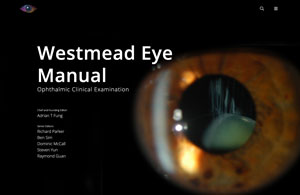30.1 Vitrectomy for Glaucoma Drainage Devices (Pars Plana Tube)
Glaucoma drainage implants (GDIs) with insertion of the device into the pars plana can be considered at the time of vitrectomy in select clinical scenarios. For instance, when a vitrectomy is planned for a patient with a history of glaucoma, one should consider if concurrent glaucoma surgery would be of benefit. Also, when a tube is contributing to corneal decompensation, repositioning of the tube to the pars plana with pars plana vitrectomy may be an option.
Pars plana tube placement can be considered at the time of vitrectomy in patients with:
- Neovascular glaucoma
- History of aqueous misdirection
- Aphakic glaucoma
- History of ICE syndrome or anterior segment conditions with risk of corneal decompensation
- Eyes with a keratoprosthesis (K-Pro) or post-keratoplasty glaucoma
- Glaucoma following complicated eye surgery; including eyes with uncontrolled IOP that could be associated with vitreous prolapse in the anterior chamber or presence of an AC-IOL
Procedure
- Determine the desired quadrant of implantation. Careful avoidance of pre-existing blebs is imperative. The superotemporal quadrant offers the theoretical benefit of longest distance to the optic nerve and a relatively surgically accessible location
- A conjunctival peritomy is created to expose the quadrant of interest. The quadrant is further exposed with a curved scissor
- Positions are marked to identify locations for scleral suturing of the implantable device. This should be more posterior than that which is performed for an anterior chamber device. Suture choice will vary by surgeon but a spatulated needle is recommended to avoid globe perforation. The GDI plate is sutured to the globe and the tube is temporarily tucked to avoid interference with the vitrectomy
- Valved trocars are inserted for the pars plana vitrectomy by the retinal surgeon. Trocar placement in the quadrant of the GDI should be pre-planned with the glaucoma surgeon. If the GDI tube is to be inserted through the trocar cannula sclerotomy, the trocar cannula sclerotomy should be made in a radial, anterior location to the track of the tube. If the tube is to be placed in a novel sclerotomy, the trocar cannula should be placed well away from that site. The use of a trocar cannula sclerotomy for GDI tube insertion offers the advantage of fewer incisions. Use of a novel sclerotomy for tube insertion offers the advantage of controlled location and wound construction for tube insertion. Additionally, a more thorough vitreous shave is possible slightly away from the trocar cannula
- The retina is inspected for a posterior vitreous detachment (PVD). If a PVD is not present, one is induced either under standard visualization or with the aid of dilute triamcinolone (Kenalog). A standard vitrectomy is then performed. In certain cases, the hyaloid may be highly adherent (e.g. uveitic eyes). In these eyes, an operative judgment should be made whether a complete induction is too risky and could potentially cause an iatrogenic break. In select scenarios, the hyaloid can be left down and shaved to maximal extent, but this increases the risk that a subsequent PVD may plug the tube
- A thorough peripheral shave is recommended especially in the quadrant where the tube is to be inserted.
- If an iatrogenic break or detachment occurs, the retinal surgeon can consider gas tamponade and temporarily “tucking” the glaucoma device in the sub-conjunctival space to avoid gas entering the shunt. In this situation the shunt can be placed in the pars plana at a later date when deemed safest
- If an existing trocar cannula sclerotomy is to be used for tube insertion, that cannula is now removed. If a novel sclerotomy is to be used, it is constructed at that point. After the vitrectomy is successfully completed, irrigation can be used to confirm vitreous remnants do not abut the sclerotomy site
- The shunt is inserted into the pars plana and sutured in place
- All trocars are removed. Sclerotomies and the conjunctiva are closed in standard fashion
All rights reserved. No part of this publication which includes all images and diagrams may be reproduced, distributed, or transmitted in any form or by any means, including photocopying, recording, or other electronic or mechanical methods, without the prior written permission of the authors, except in the case of brief quotations embodied in critical reviews and certain other noncommercial uses permitted by copyright law.
Westmead Eye Manual
This invaluable open-source textbook for eye care professionals summarises the steps ophthalmologists need to perform when examining a patient.

